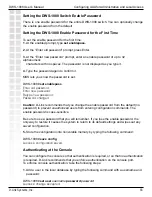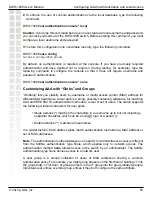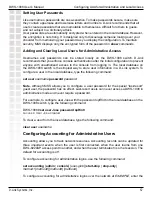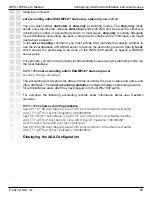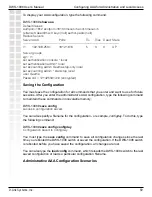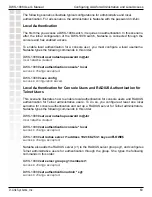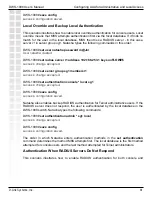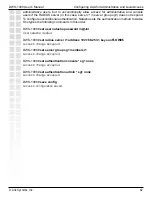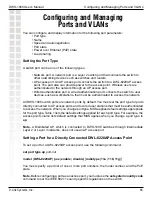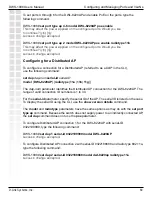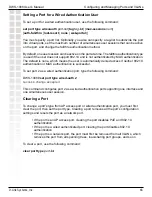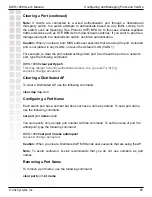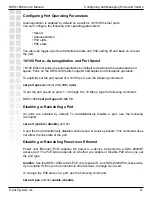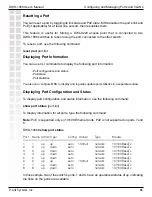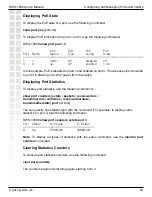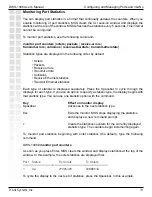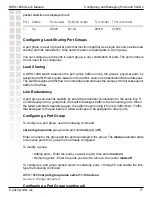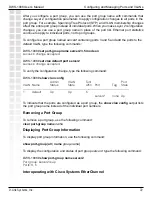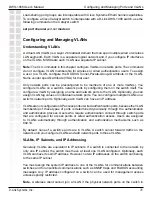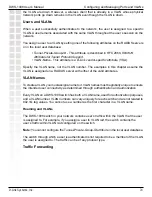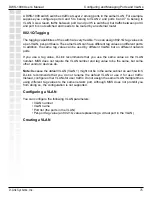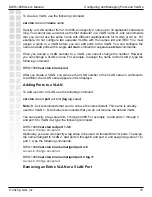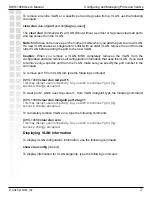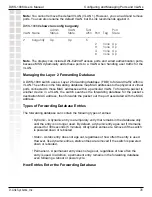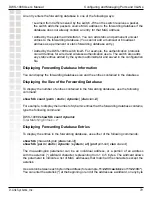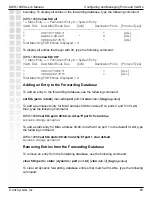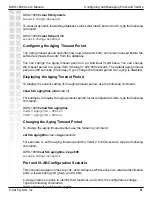
66
DWS-1008 User’s Manual
D-Link Systems, Inc.
Configuring and Managing Ports and VLANs
Clearing a Port (continued)
Note:
If clients are connected to a wired authentication port through a downstream
third-party switch, the switch attempts to authenticate based on any traffic coming from
the switch, such as Spanning Tree Protocol (STP) BPDUs. In this case, disable repetitive
traffic emissions such as STP BPDUs from downstream switches. If you want to provide a
management path to a downstream switch, use MAC authentication.
Caution:
When you clear a port, MSS ends user sessions that are using the port. A cleared
port is not placed in any VLANs, not even the default VLAN (VLAN 1).
For example, to clear the port-related settings from port 5 and reset the port as a network
port, type the following command:
DWS-1008#
clear port type 5
This may disrupt currently authenticated users. Are you sure? (y/n) [n]y
success: change accepted.
Clearing a Distributed AP
To clear a Distributed AP, use the following command:
clear dap
dap-num
Configuring a Port Name
Each switch port has a number but does not have a name by default. To set a port name,
use the following command:
set port
port
name
name
You can specify only a single port number with the command. To set the name of port 3 to
adminpool
, type the following command:
DWS-1008#
set port 3 name adminpool
success: change accepted.
Caution:
When you clear a Distributed AP, MSS ends user sessions that are using the AP.
Note.
To avoid confusion, D-Link recommends that you do not use numbers as port
names.
Removing a Port Name
To remove a port name, use the following command:
clear port
port-list
name




